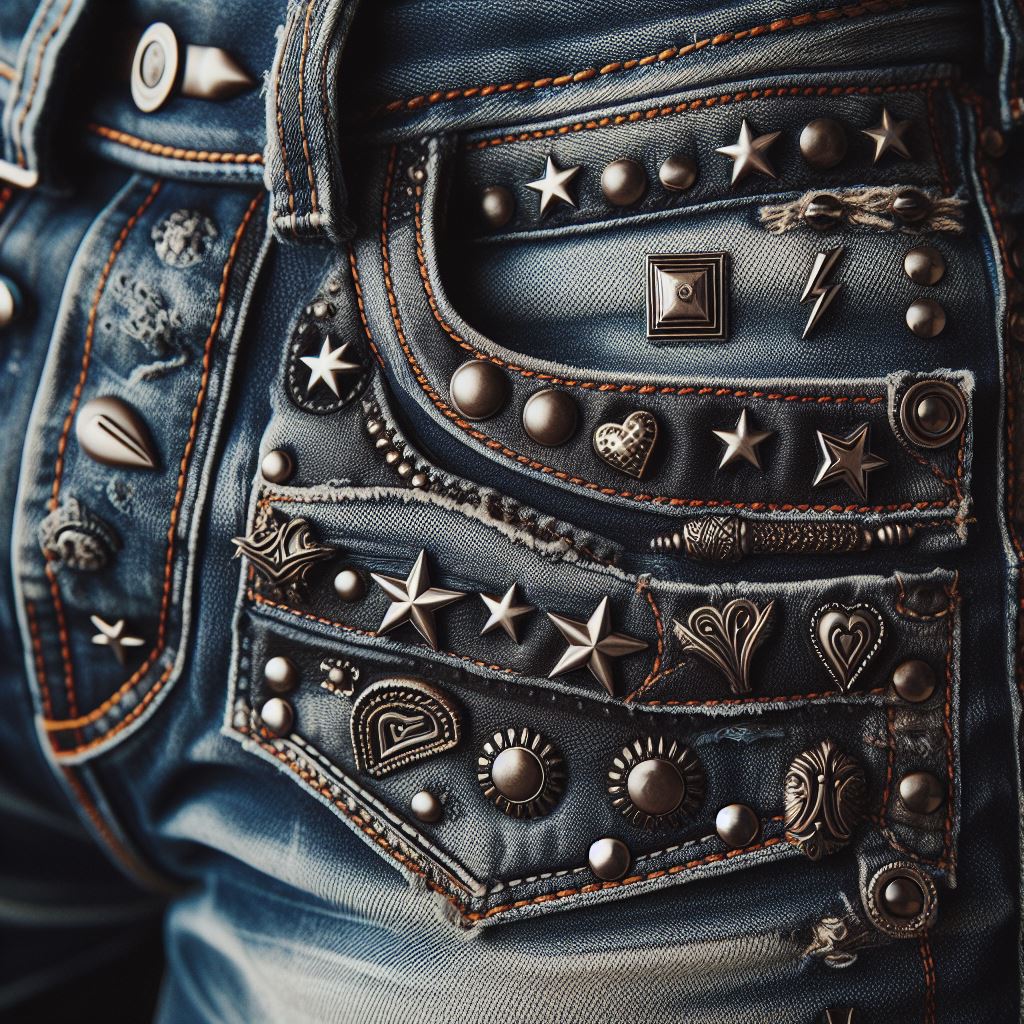In the realm of garment manufacturing, rivets serve as indispensable components, adding both functionality and style to a wide range of apparel. These small yet essential fasteners consist of various components that contribute to their structural integrity and aesthetic appeal. Understanding the different parts and types of rivets can provide valuable insights for designers and manufacturers seeking to incorporate them into their creations. Let’s delve into the anatomy and variety of rivets:
Anatomy of Rivets:
- Head: The head of a rivet is the visible, topmost part that sits flush against the surface of the fabric. It can come in a variety of shapes and sizes, including round, flat, or domed heads. The head serves as both a decorative embellishment and a functional component, providing a finished look while securely fastening the fabric layers together.
- Shaft: The shaft, also known as the body or stem, is the cylindrical portion of the rivet that passes through the fabric layers. It provides the structural support and stability necessary to hold the fabric securely in place. The length and diameter of the shaft may vary depending on the thickness of the fabric and the intended application of the rivet.
- Tail: The tail of a rivet is the portion that extends beyond the fabric layers on the underside. It is typically flattened or expanded to form a secure attachment, either through compression, deformation, or a combination of both. The tail ensures that the rivet remains firmly in place and prevents it from pulling through the fabric under tension.
Types of Rivets:
- Flat Head Rivets: Flat head rivets feature a flat, disc-shaped head that sits flush against the fabric surface. They provide a clean and streamlined appearance, making them ideal for applications where a smooth finish is desired, such as denim jeans, bags, and leather goods.
- Domed Head Rivets: Domed head rivets, also known as mushroom head rivets, feature a convex, rounded head that protrudes slightly from the fabric surface. They offer a distinctive and decorative appearance, adding visual interest and dimension to garments, accessories, and footwear.
- Tubular Rivets: Tubular rivets consist of a hollow, cylindrical shaft with a flat or domed head on one end and a tail on the other. They are commonly used in applications where a strong, permanent fastening is required, such as leatherworking, shoemaking, and industrial manufacturing.
- Split Rivets: Split rivets, also known as bifurcated rivets or bifurcated fasteners, feature a shaft that splits into two legs on the underside of the fabric. They are often used in applications where access to both sides of the fabric is limited or where a flexible, semi-permanent fastening is desired.
- Brass Rivets: Brass rivets are made from brass, a durable and corrosion-resistant alloy of copper and zinc. They offer a classic and timeless appearance, with a warm, golden hue that adds elegance and sophistication to garments, bags, and accessories.
- Copper Rivets: Copper rivets are made from pure copper or copper alloys, known for their excellent conductivity, malleability, and corrosion resistance. They are commonly used in applications where electrical conductivity is required, such as in electronics, wiring, and industrial equipment.
In conclusion, rivets are versatile fasteners that play a crucial role in garment construction, providing both structural reinforcement and decorative embellishment. By understanding the anatomy and variety of rivets available, designers and manufacturers can choose the right option to suit their specific needs and aesthetic preferences. Whether opting for flat head, domed head, tubular, split, brass, or copper rivets, these essential components offer endless possibilities for customization and creativity in the world of apparel and accessories.
